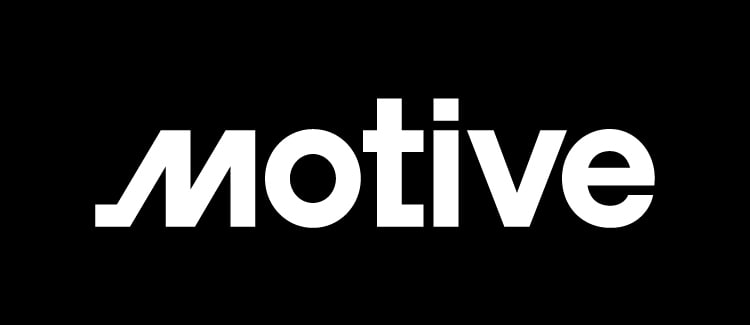Fleet optimization means making sure a fleet operates within a timely, cost-effective manner. Some major areas of it include asset tracking, expense reporting, and automation among others. It’s a vital aspect of fleet management that helps ensure compliance, boost efficiency, and ultimately make informed business decisions.
Below, you’ll find in-depth details about how fleet optimization works, along with the reasons why it’s a concept businesses can’t afford to overlook.
How Does Fleet Optimization Work?
This process consists of maximizing the effectiveness of a process. It consists of accounting for the vehicles in the fleet, and its related resources to help cut down on waste and reduce spending.
Doing an effective job starts with implementing a system that covers all the bases.
How Does a Fleet Management System Work?
A fleet management system allows managers to get performance metrics for a fleet that helps advise their decision-making. Those systems should provide insights about drivers, carrier rates, vehicles, and more.
They’re a must-have digital resource for managers hoping to increase efficiency within their fleets.
Why Maintaining Fleet Optimization Is Important?
Maintaining a high level of fleet optimization helps support the long-term health of any logistics operation. Without it, wasting precious resources like fuel, money and time can become fairly commonplace.
On the other hand, maintaining it can help aspects of the business you may have never realized.
How to Maximize Fleet Utilization
Maximizing fleet utilization can have a lasting positive impact on a logistics operation. The most beneficial tools for fleet maximization include resources like an asset or GPS tracker.
Using these tools can provide a fleet managers with the insights necessary to make the most out of their fleet.
What Is the Most Beneficial Fleet Optimization Tool?
The most beneficial optimization tool depends on what you’re hoping to collect. There are a multitude of great resources to choose from, so it’s important to have an idea of what insights the fleet optimization tool you choose to use collects.
How Can I Measure Fleet Optimization?
Fleet optimization can be measured by setting KPIs in the respective areas being measured by a fleet manager. A few potential indicators might include budget adherence, fuel costs, maintenance costs, and more.
Example of Fleet Optimization
Think about a fleet that consists of five box trucks and five vans. While managing a fleet this size is suitable currently, you’d like to be able to scale up and add another truck eventually, but that would be unsustainable for now, so you’re left to make the most of what you have. How could that be possible? Let’s say your drivers notice more maintenance problems with the trucks than they do with the vans in the fleet.
After reviewing the receipts spent on maintenance you realize maintenance is a reason the vans are out on the roads, completing more jobs than the box trucks are. Upon making that realization you trade in a box truck for another van, reducing your maintenance spending and increasing the number of jobs completed which helps contribute to the goal of adding to the fleet.
Another example could relate to getting jobs done faster. Imagine being a fleet manager who notices loads are taking longer and longer to be completed. Enabling a tracking technology with both a driver and a manager view that’s capable of sharing routes, documents, along with any other analytics capable of decreasing the amount of time it takes to get from point A to point B is an example of fleet optimization that could have a tremendous long-term impact.
Being able to accurately account for each resource necessary for completing a job is another major aspect of fleet optimization. For example, without proper tracking how difficult is it to locate idle vehicles or tools that could be being put to good use? Proper fleet optimization solves that issue, along with a handful of other pain points.
Things to Consider with Fleet Optimization
As effective as fleet optimization is, there are numerous factors for fleet managers to consider upon realizing how much of a necessity it is. After evaluating your fleet, it may become apparent that only a few specific aspects of it are necessary.
Several fleet optimization concepts that should be taken into consideration can be found below.
Expense Reporting
Expense reporting entails tracking spending related to the business in an itemized manner, making it easy to understand how the expense is necessary for business. This is a crucial component of fleet optimization because of how beneficial it is in helping to reduce wasteful spending.
Integration Options
There is a myriad of resources available with the primary focus of fleet optimization in mind. Integration options help tie each individual fleet optimization goal together.
Fleet managers benefit greatly from developing a good idea of the software integration options available to them that could help assist in their reaching fleet optimization goals.
Scalability
Scalability refers to how capable a business is in moving from its current phase, into the next one. Optimization could be exactly what it takes for businesses of all sizes to scale up.
Asset Tracking
Asset tracking entails knowing where resources are, what jobs they’re completing, and how long they’re in use.
This is another crucial facet of optimizing because it can uncover which areas of a business are the most efficient along with how to improve areas that are lacking.
Geofencing
Geofencing enables fleet managers with the ability to see how much time drivers spend at a location which helps make sure enough time is being spent there or if too much time is being spent on certain jobs.
Since some geofencing technologies provide updates on vehicle arrivals and motion tracking, using it makes it easy for fleet managers to get an idea of when vehicles are being misused.
Automation
Automation is the process of deferring to manufacturing equipment or a software service in order to complete tasks in a faster, more accurate fashion. Properly leveraging automation could have tremendous long-lasting impacts on any aspect of a business.
Performance Metrics
Performance metrics are defined as indicators of the actions of a business or employee. By establishing clear performance metrics fleet managers can get an idea of whether or not their efforts are having a positive effect.
Advantages of Fleet Optimization
One of the main advantages is discovering where inefficiencies lie, which can help improve the overall health of the business. Another benefit is the opportunity it provides for fleet managers to provide better working conditions for drivers due to reduced waste and increased savings.
Disadvantages of Fleet Optimization
Just like with anything else, fleet optimization comes with its downsides, too. Some of those downsides include the fact that some optimization software can be tricky to learn, frustrating and time-consuming. Depending on how many software integrations are involved, it can be costly, too.
Fleet Optimization vs Fleet Management
While they share similarities, fleet optimization is a different concept than fleet management. Fleet management entails processes that inform managers where the vehicles in a fleet are, what they’re doing, and how long they’re present at a site. Fleet Management focuses on maximizing the vehicles in a fleet, making sure they’re being used as efficiently and as effectively as possible.
This can help managers make informed fleet management decisions that have lasting positive effects on an organization. Additionally, proper optimization can help set fleet management standards and regulations moving forward.
Sign up for a FreightWaves e-newsletter to stay informed of all news and trends impacting supply chain careers and operations.



